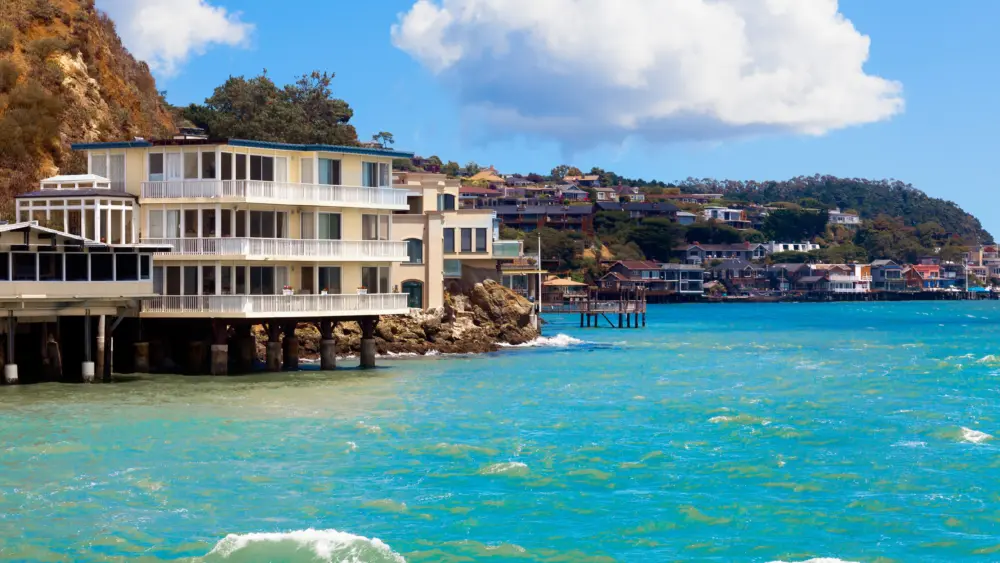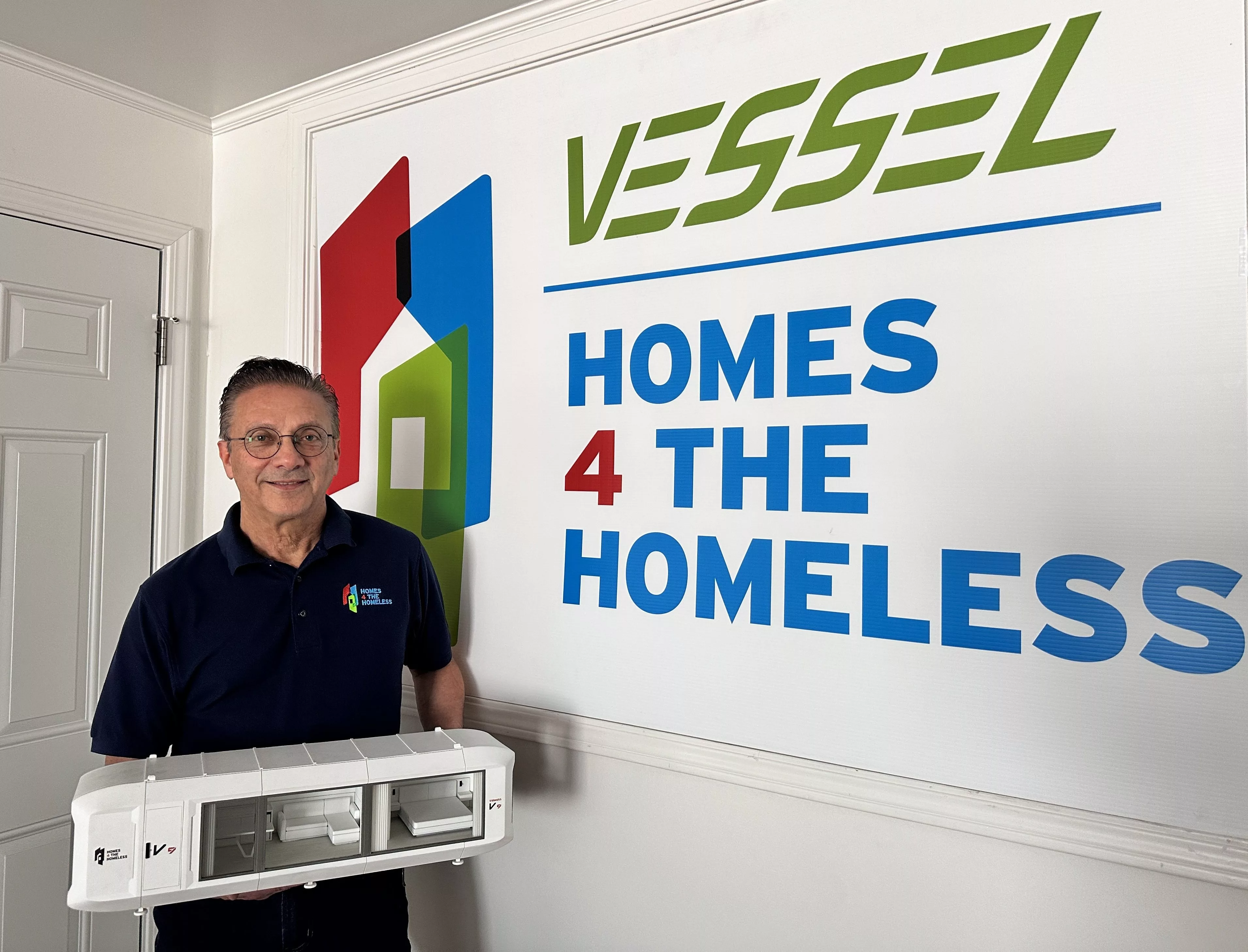
Steve Schneider started Homes 4 the Homeless to address the housing problems he experienced firsthand during the 2017 wildfires.
With the housing shortage creating challenges for communities across California to affordably house their residents, state elected officials grapple for solutions to mitigate the crisis. One strategy has been to ease certain building restrictions in order to add much-needed housing stock.
California Senate Bill 1395 took effect at the beginning of the year with the intention of streamlining approvals for temporary housing and ensuring their rapid deployment. One type of housing SB 1395 supports is tiny homes, prefab units of limited square footage—typically below 600 square feet—that can be purchased individually and delivered to
SB 1395, also known as the Interim Housing Act of 2024, was introduced by state Sen. Josh Becker (D-Menlo Park) and sponsored by San José Mayor Matt Mahan, with support from former San Francisco Mayor London Breed, as well as such regional public policy organizations as the Bay Area Council, the San Francisco Bay Area Planning and Urban Research Association and DignityMoves, a nonprofit advocate for housing solutions.
Elizabeth Funk, founder & CEO of DignityMoves, says SB 1395 is a pivotal piece of legislation. “It embraces interim housing as a valid state program and extends the key pieces of existing legislation that interim housing relies on,” says Funk.
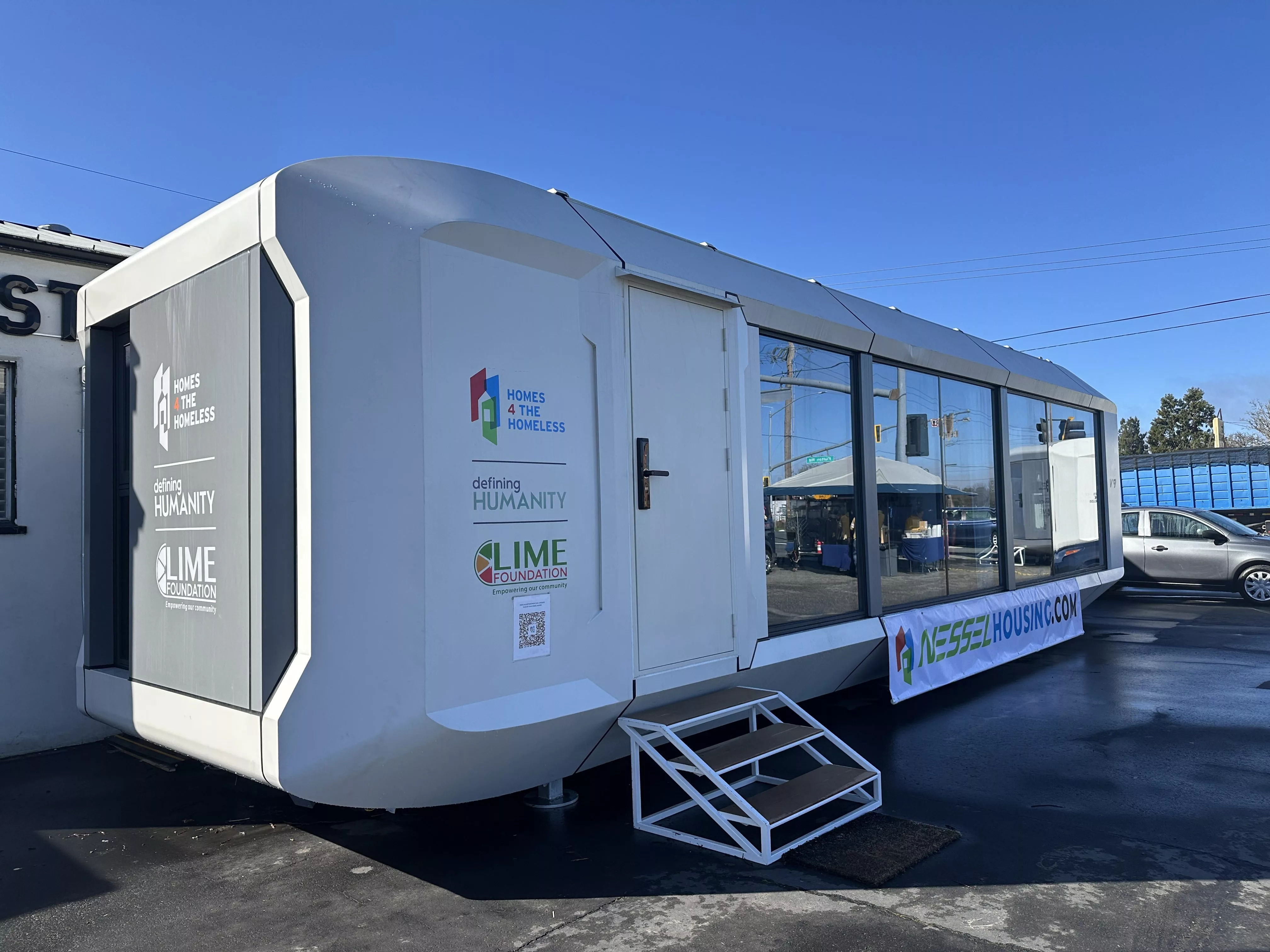
SB 1395 recognizes “homelessness as the crisis that it is, and allows local municipalities to cut red tape, waive local zoning and any other regulations that would in any way hinder, delay or impede their ability to address the crisis,” Funk says.
Funk says that building codes and zoning limitations mean the average cost to build a single unit of permanent housing for the homeless is now around $850,000 per unit. Tiny homes, however, are pre-built and can be purchased at a fraction of that cost.
The bill gained unanimous bi-partisan support and Funk sees that as a good sign. “State officials are intent on allowing local governments the broadest possible set of tools to address this crisis with the determination that a crisis requires,” she says.
Addressing homelessness and disasters
One company hoping to address the crisis by building tiny homes is Homes 4 the Homeless, a Fulton-based nonprofit focused on modular units for the homeless.
Steve Schneider, the founder and CEO of Homes 4 the Homeless, was inspired to start the company following the 2017 North Bay wildfires, which left his family temporarily homeless after the Tubbs fire destroyed their Fountain Grove home. “I lost my house at a moment’s notice and I thought, if this could happen to me, it could happen to anyone,” says Schneider, who had previously run a successful electric-vehicle business. “I changed my whole world and became very mission driven on trying to create affordable housing for people in need.”
Schneider initially envisioned providing inexpensive homes that were like fold-up shipping containers—but soon learned such models were not compliant with municipal building codes. And, unlike electric vehicles, regulatory exemptions for tiny homes didn’t exist.
“We realized we had to build [tiny homes] to full code compliance” in order to succeed, Schneider says. They contracted with the National Testing Agency, a branch of the International Code Council, which offers third-party testing, inspection and plan review to help clients ensure compliance with building codes. Schneider says this was an invaluable lesson. “When it comes to housing, compliance is definitely going to be the choke point,” he says.
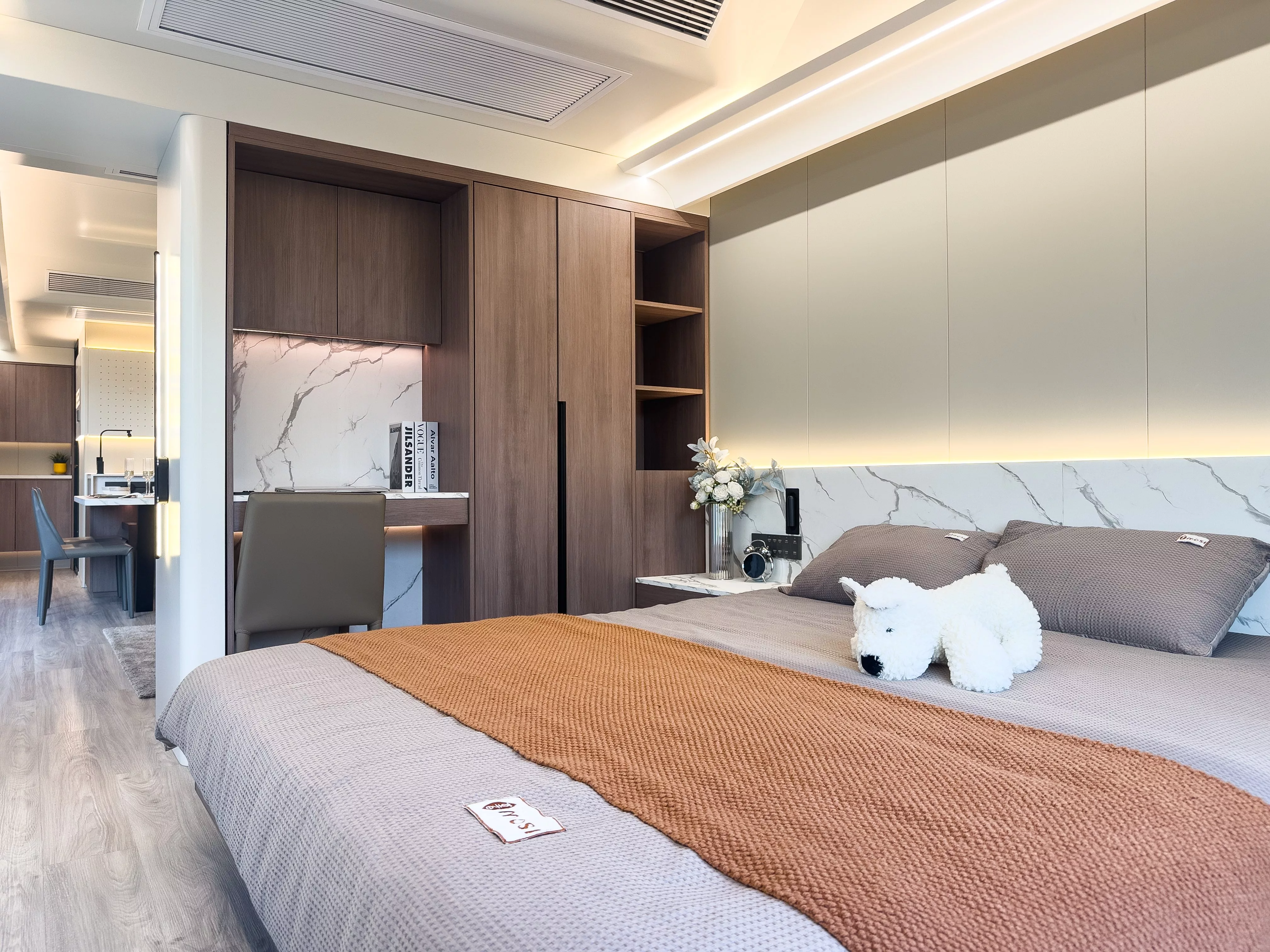
With NTA approval putting their tiny homes on the fast track, Homes 4 the Homeless decided to move beyond the shipping-container modules toward more upscale models, or “dignified homes,” as the nonprofit puts it. The nonprofit engaged Guangdong Vessel Cultural Tourism Development, a China-based company focused on building eco-friendly housing for luxury tourism, to see if they could modify their capsules to be fully code compliant to U.S. standards, while also meeting affordable housing needs.
“They loved the idea,” Schneider says. Vessel officially joined forces with Homes 4 the Homeless in 2023.
Homes 4 the Homeless now holds a manufacturing and distribution agreement for the Vessel capsule homes in North America. They are working with the NTA again, to ensure the modules meet all standards to be compliant homes.
In addition to mitigating homelessness, the nonprofit is also positioning its modules as temporary housing solutions in the event of disaster.
The first Vessel capsules for the North Bay arrived last November. The timing was fortuitous—in early December, the National Association of Counties was at the Luther Burbank Center in Santa Rosa, holding a meeting on emergency services and disaster relief. Sonoma County Supervisor James Gore, who’s serving this year as president of the national organization, arranged for Homes 4 the Homeless to show its capsules during the meeting. “[County] supervisors from all over the country were able to see them,” says Schneider.
Meanwhile, as the NAC’s disaster relief meeting continued, an earthquake rattled the North Bay—the 7.0 quake on Dec. 5 was centered in Humboldt—setting off earthquake and tsunami smart phone alerts throughout the LBC.
“All of the board supervisors, like 500 of them from all over the country, were coming out the back door where we were parked and we were just like, ‘Disaster-relief housing this way, disaster-relief housing this way,’” Schneider says. “Because of the alerts, everybody saw [the capsules] and they all piled in. It was a pretty amazing moment.”
Schneider says they can be used for both permanent or temporary housing, depending on the need. “The new laws are very [conducive to] temporary housing, and the ability for us to pivot, depending on what the needs are,” Schneider says. “These can be really flexible because of the size and the mobility and the structure.”
The Vessel housing units became available for general viewing at the nonprofit’s Fulton headquarters—3362 Fulton Road—this past December.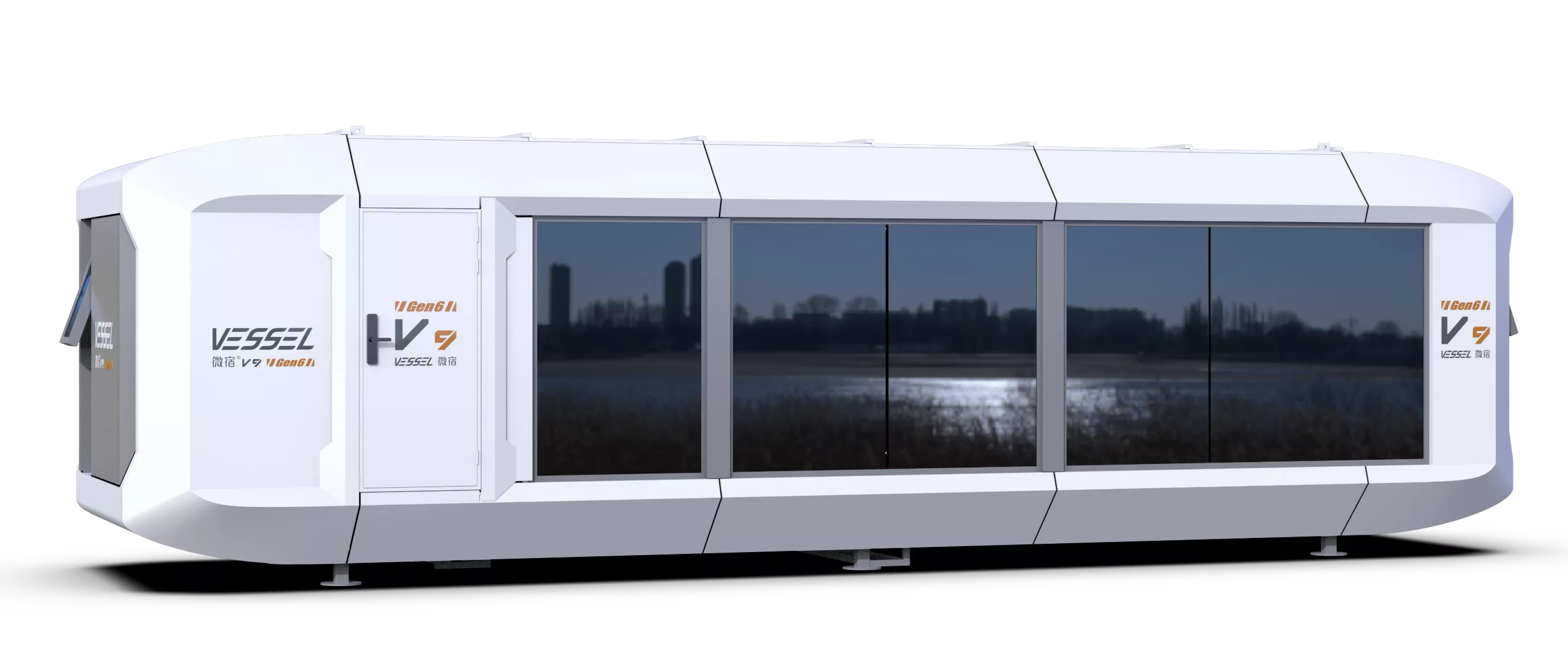
Schneider says that since the capsules arrived they have been gaining attention, noting a 130-unit development planned near the Sonoma County Airport, and a 120-unit development proposed in Lake County.
Schneider points out that a positive change since the recent wildfires has been the concerted emphasis on making it easier to place small units onto properties.
“Senate Bill 1395 is streamlining a lot of the process and allowing for more flexibility flowing through to the counties and the cities,” he says.
In fact, they have units available immediately and they’re able to deploy them right away. “We have them here in Fulton,” Schneider says. “If someone in the area wanted to purchase one they could just go there and look and purchase one.”
Once a Vessel home is delivered to its site, he says, it only takes a couple of hours to hook it up with washer, dryer, refrigerator, dishwasher and everything ready to move in.
“I’ve always done very complicated business transactions, and this is the simplest,” Schneider says.
Big-picture thinking on tiny homes
Local architect David Ludwig’s many years of work includes tiny home designs, amidst a portfolio of 500 projects throughout the Bay Area. He says he’s witnessed 50 years of changes with regard to smaller housing options while running his Ludwig Design business.
Ludwig, 80, has downsized his lifestyle to living in a specially designed Airstream travel trailer on property in Sonoma County, and enjoying the freedom it allows. He’s also designed several variations for tiny homes and talks about the many benefits that come with living in a smaller space, as well as the hoops one must jump through for approval and meeting building code.
Most of Ludwig’s designs throughout his career have been for 2,000- to 3,000-square-foot homes. He says when codes changed with more restrictions on size there was a shift in local architecture to designing small spaces to be as efficient as possible.
Around that time, he says, trailer parks began to allow tiny homes in order to expand their trailer communities. “People who were designing new trailer parks realized [they] can actually make a section of it for tiny homes or [create] a tiny house community.”
Ludwig says that planning became the challenge because of the misconception that people interested in tiny houses would be nomads. “The problem was that the local planning [officials] weren’t quick at making the transition from short-term temporary RV-based to [viewing tiny homes] as a long-term retirement-based community where people are going to move in and stay as they age.”
Then the state of California made “a very wise set of decisions,” Ludwig says. “First of all, they said every single-family property in the state of California can have an accessory dwelling unit. This was 10 years or more ago, and it was the precursor to dealing with the housing shortage.
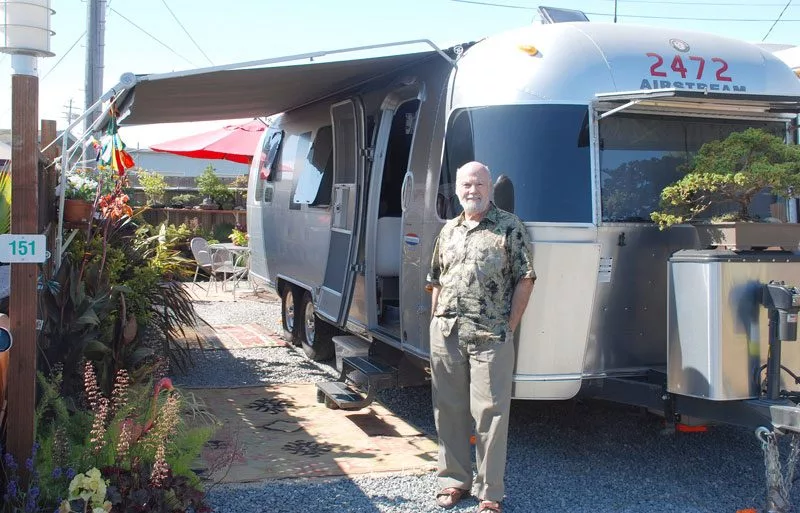
“If you take all the single-family properties and you allow a second unit, you can double the housing stock,” Ludwig points out.
Advocates for the tiny house movement began pushing for the inclusion of mobile tiny houses with wheels as part of the accessory dwelling unit (ADU) legislation and, slowly, counties began allowing tiny homes on wheels as well.
Ludwig says that the majority of areas in Marin won’t allow more than one tiny house per property. “Even in those cases, the applicant has to basically go and argue the validity of their claim,” he says.
“That’s what we’re faced with,” Ludwig says. “We have disenfranchised groups who have less money being invited to join a community, but being blocked by the complexity and the time involved in getting approvals.”
With the many wildfires hitting the state, tiny homes are becoming an important resource.
“People can move on to a burned property in a tiny house, rebuild the property and then rent out the tiny house,” Ludwig says. “This is just kind of beginning to come forward out of the ashes.”
Ludwig says tiny homes are a natural solution to getting people back onto their properties following a disaster, but people haven’t yet adopted that mind set. He believes creating a tax incentive for ADUs is a solution.
“If you give people a major tax incentive on their property tax for an accessory dwelling unit, people would be snapping that up as an option, and then we’d see the housing stock grow very quickly,” Ludwig says.
While a champion of ADUs and tiny homes, Ludwig is at heart a proponent of the nomadic living provided by his travel trailer.
“Here I am, 80 years old, and I’m living full time in my Airstream, and we travel about seven or eight months of the year,” Ludwig says. “We live on the road, and then in the summer when all the campgrounds are full, we stay in Santa Rosa.”
“That’s a lifestyle we set up that is responsive to fires, smoke, climate change and whatever,” Ludwig says. “This particular lifestyle with a mobile-living-situation is better adapted to the pressures that are on our culture and our communities.”
Wildfires lead to uptick in tiny home awareness
As of February 2025, California has lost 16,249 structures in 359 wildfires where 57,660 acres have burned, according to data from Cal Fire.
As a comparison, in 2024 there were 2,148 structures destroyed in 8,024 wildfires with 1,050,012 acres burned. In 2023, across California 179 structures burned in 7,386 wildfires with 332,822 acres burned.
Wildfires add to California’s already burdened housing crisis, but as more housing codes are loosened to allow for tiny homes and other small or mobile options, the potential for adding stock continues to increase.
Between those who are homeless, those who are experiencing a loss of their home from a natural disaster and those who are so-called precariously housed (i.e., a job-loss away from homelessness), there is a common thread—housing is essential to maintaining dignity and the pursuit of happiness.
In research for this and other NorthBay biz housing stories, local residents downsizing to smaller living situations often speak of the unexpected benefits of letting go of unnecessary “stuff” and living more simply. Tiny homes, tiny home capsules, and other smaller living accommodations are not only are a resource for addressing the growing housing crisis, they can also offer a more peaceful existence.
Tiny home villages face more obstacles than single ADUs placed at people’s homes. But these villages offer up the potential for cooperative living in more sustainable and environmentally friendly ways.—Janet Perry



